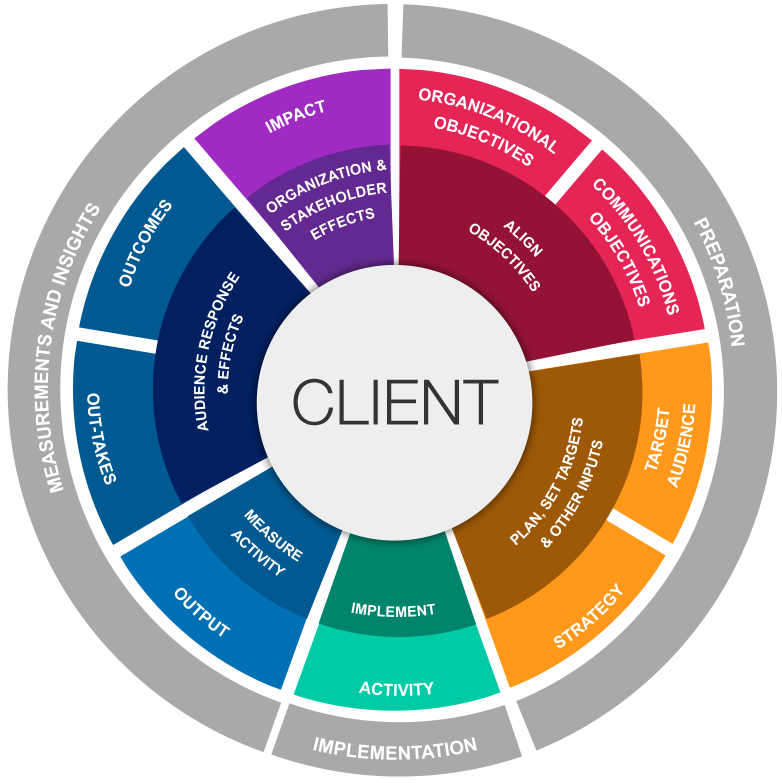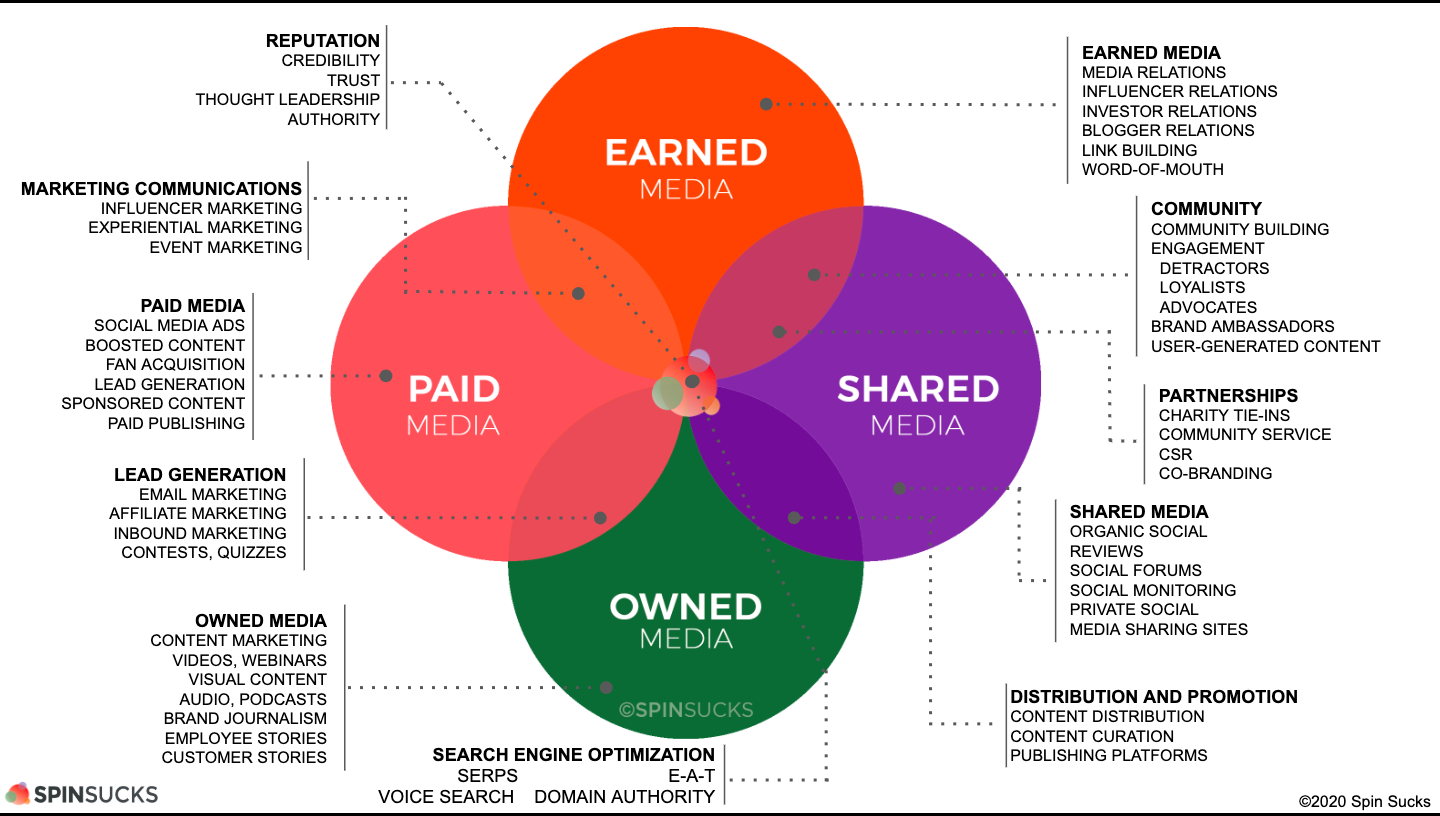
Successful PR measurement in 2024: Using the right metrics
The metrics that help you calculate PR success (and some others that just make you look good 💅)
TL;DR There are tons of ways to measure the success of your PR, and you should absolutely do it. Why? Because it helps you improve your campaigns, work smarter in future and demonstrate why what you do has value.
The downside: the things you measure will depend entirely on what you're trying to achieve with your campaign. There is no magical list of go-to metrics I or anyone else can give you that'll take care of all the strategic legwork you need to do before hitting the "go" button.
It all depends on your PR strategy.
And how do you develop a solid PR strategy? Start by opening this PR strategy guide in a new tab for later, and listen to this interview with Gini Dietrich and Laura Sutherland on the subject.
Then come back and scroll through the rest of this article for SEO-approved examples of KPIs, PR metrics and outdated, meaningless things you don't need to bother measuring.
- What are PR metrics?
- Why measure anything?
- What metrics actually measure PR success?
- Using the PESO model to plan how you will measure PR success
- How to calculate PR
- Terrible, Horrible, No Good, Very Bad PR Metrics
- Using PR metrics alongside your KPIs
- 4 steps to get you started measuring the effectiveness of your PR
PR metrics are the things you use to measure the impact of your campaign or project.
And there's a whole lot to choose from.
There are useful metrics, which use data or the careful analysis of qualitative information to demonstrate change over time, and not-so-useful metrics – you know, those ones that sound fancy but don't actually mean anything.
Some examples of good PR metrics:
- Share of voice
- UTM site traffic
- Media mentions
Some examples of crap PR metrics:
- Ad value equivalency (but more on that later)
It sounds bananas, but most people spend a wild amount of time chasing meaningless metrics, either because they've been asked to by some woefully uninformed manager, or because they didn't take the time to figure out whether or not what they're measuring actually paints a meaningful picture of the impact of their work.
The other problem?
It can be super hard to judge which metrics are useful, and which aren't.
For example, if impressions don't mean anything to your campaign but everything to your CEO – are they useful to track? Probably, if you want to keep your job. As always, the business of pulling off a successful PR campaign is 50% working on the actual campaign and 50% convincing the rest of the company that it is worthwhile.
Honestly? Two reasons – one good one and one very, very frustrating one:
- To get better at doing what you do, and
- To convince your clients/overlords that what you do is worth doing
If a sales rep does well, it's generally reflected in the figures. If a digital marketer checks off all the right keywords, the business's Google ranking will go up.
But so much of PR is intangible.
Finding a way to quantify the outcomes of your work will not only go a long way in convincing Scrooge McDuck that you're worth your paycheck, it will also pretty much guarantee that you'll pick up the knowhow to know what parts of your work are worthwhile – and what you can skip altogether.
Opinion is split! While the metrics you'll want to measure will vary depending on the goal of your campaign and the tactics used, the biggest PR bodies in the world do have their own opinions on what they believe are the most valuable PR metrics.
Of course you've heard of them, but let's bear with for all the other people reading this article.
The Barcelona Principles are a set of seven voluntary guidelines identified by public relations professionals to measure the efficiency of PR campaigns. They were the first major framework designed to effectively measure public relations and communications.
Here's what the seven principles actually are, as stated by AMEC:
- Setting goals is an absolute prerequisite to communications planning, measurement, and evaluation.
- Measurement and evaluation should identify outputs, outcomes, and potential impact.
- Outcomes and impact should be identified for stakeholders, society, and the organization.
- Communication measurement and evaluation should include both qualitative and quantitative analysis.
- AVEs are not the value of communication.
- Holistic communication measurement and evaluation includes all relevant online and offline channels.
- Communication measurement and evaluation are rooted in integrity and transparency to drive learning and insights.
In crude summary, they give some examples of wise things to measure:
- An incremental increase in sales (for profit-driven organizations)
- A shift in public behavior beyond the standard purchase intent
- A rise in the number of brand advocates per quarter
- Qualitative as well as quantitative analysis
Read a full recap of the Barcelona Principles 3.0. and download the accompanying presentation.

To put the Barcelona Principles you can use AMEC’s new Integrated Evaluation Framework, which helps you measure more than just "media outputs".
It's made up of seven key elements:
- Objectives: These can be broken down into organizational objectives (so, awareness, advocacy, adoption or demand, to name a few options) and communication objectives (which reflect the organizational objectives).
"Remember, the difference between an objective and a goal is that an objective has a measure of impact (e.g. 20% increase in brand awareness), compared to a goal that is an aspiration (e.g. increase brand awareness)." – Richard Bagnall, AMEC - Inputs: Here you must define the target audiences of your campaign, as well as the strategic plan which may include things like situation analysis, any resources you will require and budget allowance.
- Activities: What activities are being carried out? This should include any testing or research, as well as PESO activities (more on that in the next section!).
- Outputs: What tangible figures did your PESO activities result in? This may include, for example, number of visitors to your website, reach of paid advertising, number of people attending an event, number of retweets or social shares, and so on. Remember, you already decided what figures you're tracking during the previous three steps.
- Outtakes: How did your target audience respond to your activities? Can include things like how attentive those people were to your content, how well they understood the topic, whether they subscribed for more content, and so on.
- Outcomes: What was the effect on the target audience? This differs from "outtakes" in that it deals with the internal attitudes and beliefs of your audience – did their perception of your topic change? Are they now more likely to perform a certain action?
- Impact: How did your overall campaign contribute to the wider organizational objectives? This is the good part – you can finally demonstrate with concrete evidence that your actions resulted in positive change for the company; that your work has merit. Hurray! 🎉
All in all, AMEC's framework guides you to tell a meaningful measurement story that clearly relates your work to the success of the company – something that Richard Bagnall spoke with us about in a recent livestream on PR measurement in 2022.
Because metrics aren't everything and they're nothing without a bit of strategy.
Working in communications, it's very likely that you've already heard of the PESO model as the thing that pretty much redefined public relations.
If not, here's the lowdown: The PESO model takes the four different media types – paid, earned, shared and owned (PESO, get it?) – and merges them together. Not only does it sounds like some sort of delicious latino snack, it also guides you through planning out a whole strategy for your communications campaign, complete with tactics.
And it looks a little something like this:

Ok, I know, there's a lot going on there. But once you break it down it becomes marginally less scary. It also helps to know right from the gecko that you don't have to use all the tactics listed above.
Here's a quick summary of all the sections:
- Paid: Pretty much exactly what it says on the tin – you pay money to reach your target audience. In fact, it's particularly good at getting your content in front of new audiences. But reading is boring – go listen to Gini Dietrich go into the whole thing in the Pay To Play episode of the Spin Sucks podcast (don't worry, it's free (guess it was part of the owned part of her strategy!))

- Earned: This is what most people think of when they hear "PR" and yes, media relations falls into this category. And it is not easy to get. Think about how many cold pitches you've answered in the last week? Exactly.
- Shared: aka social media. Also, not easy – brands spend a ha-uge amount of money and time trying to pinpoint that tone of social media post that sounds flippant, effortless, off the cuff. Some even pull it off; most don't. But you don't have to be MoonPie to get your slice of the action – just some thoughtful investment.
- Owned: Your blog, your videos, your content. It's something you created that lives on your turf, and no one but you is responsible for its performance. That means you're hosting it yourself – not YouTube, not LinkedIn, not any of the countless other platforms that use algorithms to play god over who sees what. In a world ruled by advertising bidding wars and biased AI, having a little kingdom where you reign supreme is vital, according to Spin Sucks. And actually, we think so too
And then, of course, there are all those overlapping parts of the PESO Venn diagram. So much to do! So many options!! Where should you even start? (Freebie: you should start with owned.)
Knowing the definitions alone doesn't really help you (but it does help my SEO! Come onn owned content). Gini Dietrich, the literal queen of PESO, outlines how you can use the PESO model in your PR campaign in this article from Feb 2022; check it out.
Still feeling in over your head? I don't blame you. That's why Spin Sucks offers a course to get certified in using the PESO model.
Once you've sorted out your goals, strategy, tactics and what you're going to measure, you'll probably want to pin down a reliable way of measuring those things.
Again, the answer to everything is "it depends"; it depends on what you want to measure. But fret not – it's 2022, so there's an app for everything. (Literally everything.)
Here is our list of the top tools for measuring your PR metrics (and by extension, calculating the success of your PR 🎉 ).
I'm sorry if this hits too close to home, but it's 2022 – we have billionaires whizzing into space every few minutes and driverless vans running down children in Arizona (note to self: fact check). Only the most insecure of gentlemen care about the number of inches their story wins in a print publication.
AVE – or ad value equivalency – is one PR metric you should throw straight in the trash.
It's something that the top cats at AMEC saw to be so detrimental to the PR industry that they condemned its use. Then the Chartered Institute of Public Relations took it a step further and said any member using AVEs would be banned from the organization.
It is important that communications measurement and evaluation employs a richer, more nuanced, and multi-faceted approach to understand the impact of communications.
Instead? Try something like estimated coverage views from our friends over at Coveragebook. Instead of equating the value of your coverage based on how much the same amount of ad space would cost (which is a bananas idea on many levels, least of all perceived authenticity), ECV estimates the number of impressions that your coverage is likely to achieve – giving you a figure that is not only way more sensible than AVE, but which is more easily comparable with other metrics that c-suite will be looking at – say, marketing analytics.
But again, it's up to you to work out whether measuring ECV will help you achieve your project goals.
KPIs – key performance indicators – guide each team within a business towards achieving broader company goals by setting quantifiable milestones that need to be ticked off on the road to hitting a project objective.
Finding the right PR metrics to measure is pretty much essential if you want to consistently hit your objectives (or almost hit – some milestones are purposefully made to be just out of reach, because apparently life isn't hard enough).
Here are a few PR metrics you can use to measure the success of your PR content.
"Why am I doing this?" sounds like a very basic question, but don’t underestimate the importance of knowing exactly why you’re doing what you’re doing.
From a business standpoint, this question will help you clarify your ultimate goal for any new initiative. It probably has something to do with earning more money, gaining a bigger following, retaining happy customers and generally moving your business forward.
If you don’t know what your goals for a given campaign are before you launch that campaign, you’re already dead in the water. Do you want to catch the attention of a market niche? See your brand all over the media? Decide in advance what you want to accomplish.
Once you’ve identified your goals, decide how you will know when you’ve achieved them. If your goal is a strong social media community, you might measure things like mentions and shares. If you want coverage by top influencers, decide what kind of coverage and by whom.
Example: if your goal is to increase membership, decide how much of an increase spells success. Say you spend $10,000 and get 100 new members. Is it a success or not? The answer is, it depends. If every new member is worth $5,000 in new business, then probably yes. If every new member is worth $5, probably not. You can’t know unless you’ve decided in advance what success looks like for your business.
Decide which metrics to pay attention to, and which metrics to ignore.
Keeping with our example of increasing members, you obviously want to measure new memberships, but there are many related metrics that will also be helpful to you. If you’re driving traffic to a sign-up page, you probably want to know where the most traffic is coming from, how many people leave without signing up, and how many people begin the sign-up process but don’t complete it (to name just a few). Conversely, know which metrics you can ignore – this will vary widely based on your specific situation, but remember that just because you can measure something, it doesn’t mean that you should..
Once (and only once) you’ve answered these three questions, you can get down to the actual business of measuring and reporting. Measurement itself is a tactic, and numbers won’t tell you anything if you don’t already know what you’re looking for.
How do you build your PR measurement and evaluation strategy? What metrics are important to you, which ones do you ignore, and how do you decide what it means to be successful?
After you’ve outlined your high-level success metrics, break them down into smaller milestones so you can measure your progress against them.
If your goal is a strong Facebook presence and one of your metrics is 10,000 fans in three months, you might set benchmarks for 1,000 fans at the end of the first month, 5,000 after the second month, etc.
If you find that you aren’t hitting the benchmarks you set in step 3 above, don’t panic. Take it as a sign that you need to adjust your strategic and tactical approaches, or that perhaps your original benchmarks were unrealistic.
Measure your progress against your goals, success metrics, and milestones as you go, and you’ll always know if your approach is working or if you need to make mid-course adjustments in order to meet your goals.
Kate Bystrova
Published April 2022; updated January 2023